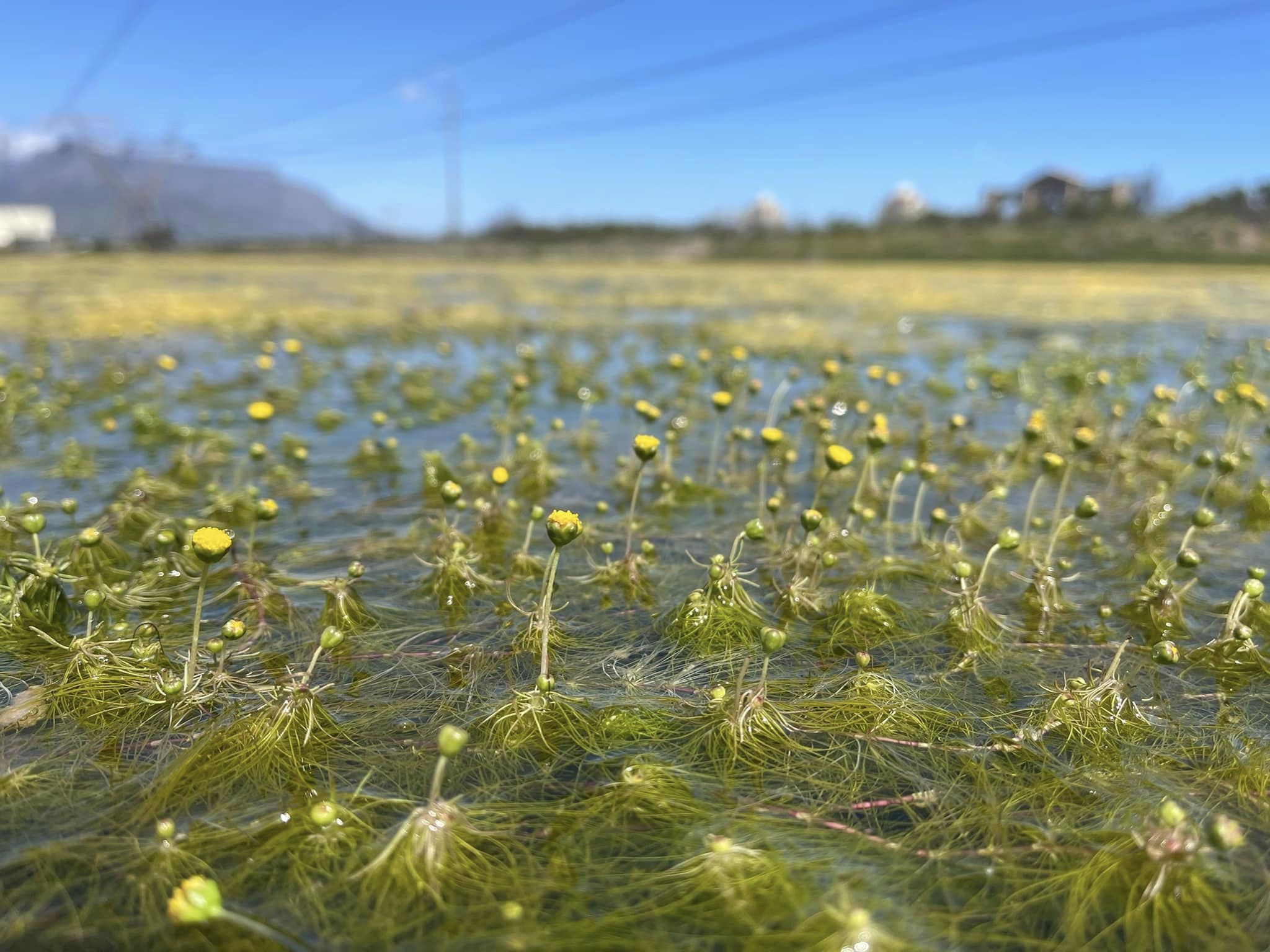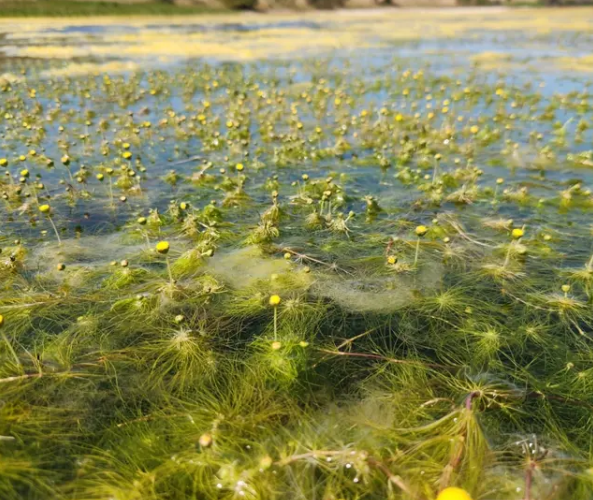The Salt Pan Daisy, also known as floating buttons and scientifically, Cotula myriophylloides, has been believed to be extinct in South Africa. It was last spotted 98 years ago, in 1926. Botanists have been searching for this small precious plant in the Cape Flats wetlands for a century.
The rediscovery of Salt Pan Daisy
This past winter’s heavy rains have encouraged these precious flowers that have disappeared for close to a hundred years to reappear on the surface of the Cape Flats wetlands. The flower was spotted in July 2024 by a City of Cape Town conservation biologist officer, Cliff Dorse. However, it had none of its distinct yellow flowers at the time, and it was only when the wetlands had dried and the flowers bloomed this October that he was able to confirm his findings.

Image credit: Grassland Society of South Africa / (Facebook)
Biodiversity of Cape flora
It is possible that the Salt Pan Daisy has been prevalent all along while being sought after and possibly forgotten. There is a myriad of exciting flora, natural beauty and biodiversity in overlooked spaces.
While Cape Town prides itself with state of the art botanical gardens and indigenous flora and fauna on Table Mountain, there are perhaps thousands more waiting to be discovered and appreciated across the peninsula and within the Cape Flats.
The rediscovery of the Salt Pan Daisy is a remarkable reminder of nature’s resilience and the hidden treasures that lie within overlooked landscapes. While the Cape’s botanical gardens and celebrated mountain flora draw well-deserved attention, there are many lesser-known gems like this tiny flower waiting to be rediscovered.
The story of the Salt Pan Daisy reminds us to look closer at the ecosystems around us and to appreciate the resilience and beauty that thrives in unexpected places. Nature often holds its secrets quietly, only to reveal them when we least expect it, bringing hope, excitement, and a renewed commitment to preserving these extraordinary habitats for generations to come.
ALSO SEE:
Feature image: Grassland Society of South Africa / (Facebook)


